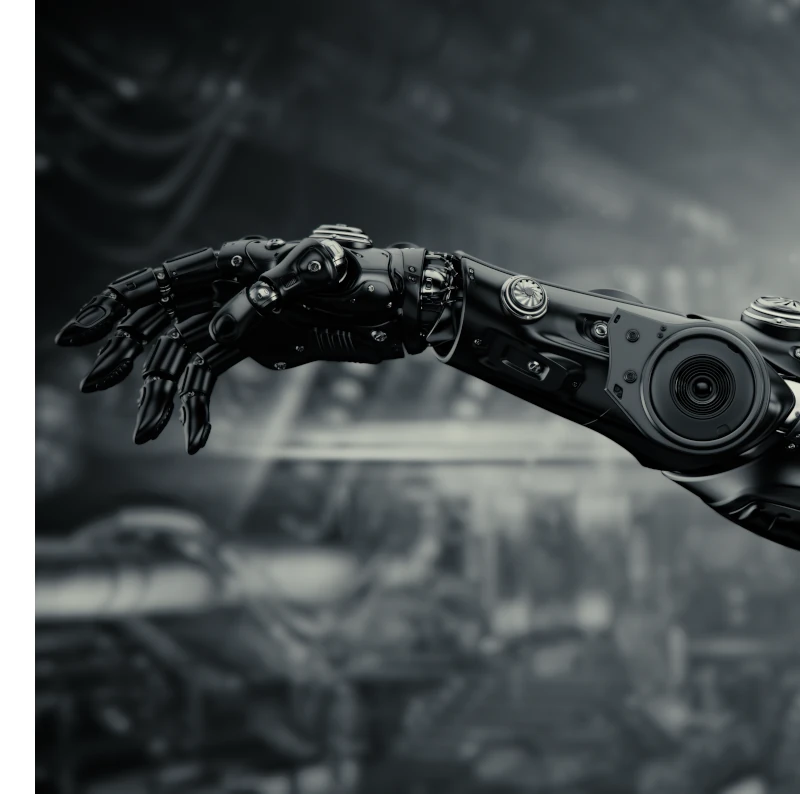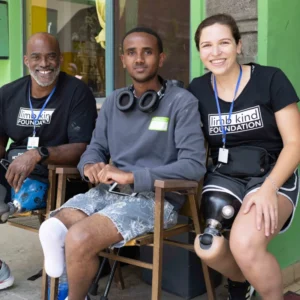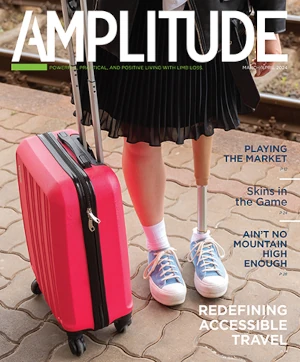by Alexandra Capellini

As an above-knee amputee, I do my best to stay informed about the pipeline of amputee technology. New advances are on the rise, and breakthroughs seem to constantly be moving the field of prosthetics forward. The major question is: forward toward what?
After all, the value of any given prosthesis depends on what the user intends to do with it. For some of us, form takes precedence: We desire a prosthetic limb that “blends in well” and “balances things out” aesthetically. For others, the main thing is function: We place emphasis on how well the limb enables us to carry out specific physical activities. Some of us embrace the bionic look of our devices and love to show off the shine. Others prefer skin covers that are less conspicuous.
The broad range of wants and needs has spurred some incredible technological advances. For example, I have access to chip-equipped devices that are light-years ahead of earlier generations. Microprocessor technology enables me to walk with a relatively smooth gait that feels pretty natural and minimizes fall risk. I can traverse staircases step over step, feel supported on sloping ground, walk backward as needed, alter my pace, and step over obstacles. Some microprocessor prosthetics are waterproof for showers or swimming. Others have alternate modes for walking and biking. These features aren’t merely physically empowering. They also have profound psychosocial benefits. It’s a great relief to go about my daily business without the constant fear of falling, and without constantly paying attention to the ground to avoid falls. When I’m in line at the pharmacy, leaning against a wall in a coffee shop, walking with a group, or simply crossing a Manhattan street, I can be completely at ease.
But no matter how impressive the technology on a given prosthesis may be, in practical terms two other considerations still take precedence: socket fit and cost. Customized socket fits should remain the top priority of every prosthetist, regardless of what prosthesis is being offered to an amputee. If the socket doesn’t fit, the prosthesis won’t be worn, and the high-tech features become irrelevant.
The same can be said for a device that’s too expensive to be worn on a daily basis. Most insurance companies now cover microprocessor knees, at least on paper — but they still find ways to deny a lot of valid claims. And even when the initial acquisition is covered, maintenance and repair expenses can be prohibitive. To avoid those high out-of-pocket costs, many amputees limit the use of their prosthetic devices to reduce wear and tear. But that defeats the purpose of technological innovation — why bother to acquire an advanced bionic limb if you can only afford to use it once in a while?
Upper-limb amputees have their own set of practical considerations for prosthetic devices that matter as much as (or more than) the appearance and functionality. The bionic hands now reaching the US market offer incredibly lifelike capabilities. They include sensory feedback so users can “feel” what they touch, fast-clenching fingers that make it possible to catch a ball, dozens of grip settings that allow users to turn a doorknob or zip up a coat, and waterproof materials that allow wearers to wash dishes.
But for many upper-limb amputees, a device’s range of function is secondary to its ease of articulation and control. What’s the value of a finely calibrated device when you can’t intuitively use your muscles to achieve the grip you want? What does it mean to “feel” through your prosthetic fingertips when it’s challenging to respond to what you feel? These features bring users closer to realizing the phenomenal dexterity of a human hand, but practical barriers still have to be cleared before an average person can use one of these devices for day-to-day tasks.
Weight and battery life are other major considerations for bionic-arm users. A prosthetic arm that feels leaden won’t (and can’t) be worn for long stretches of the day. And as these devices continue to add new features that require more energy to maintain, battery life becomes more important than ever. Although the new generation of bionic arms only require a few hours of battery-charging time, there is room to improve upon one-day battery lives.
Every year, the prosthetics industry moves closer toward creating products that look and function like actual human limbs. But there’s still a lot of work left to do in solving practical considerations such as socket fit, cost, and ease of use. The latter remain the keys in deciding how meaningful any product can be for amputees.
Alexandra Capellini is a medical student at the Icahn School of Medicine at Mount Sinai in New York City.









